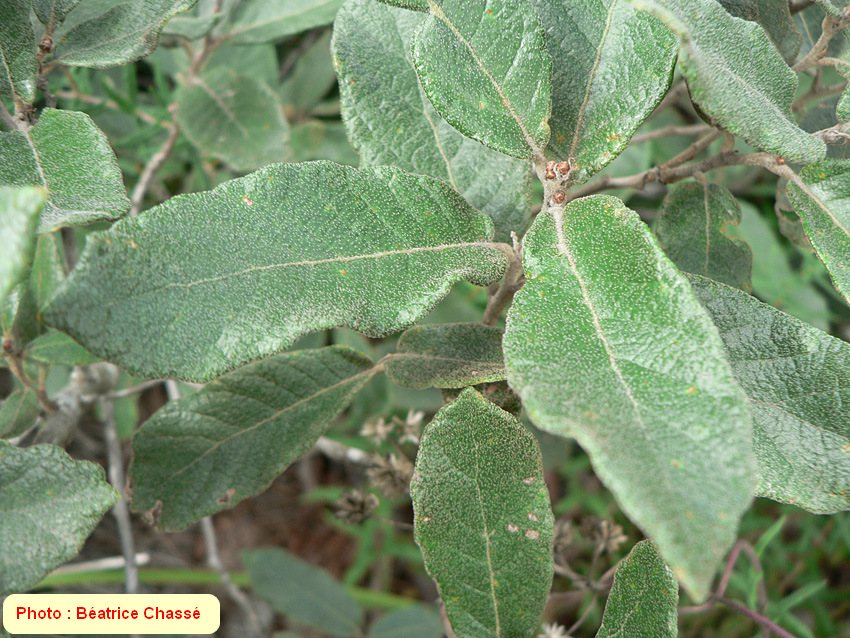| Quercus repanda | |
| Author |
Bonpl. 1809 Pl. Aequinoct. 2: 31 Diagnosis here |
| Synonyms | lecomteana Trel. 1924 revoluta Trel. 1924 Diagnosis here subtriloba Trel. 1924 Diagnosis here supranitida C.H.Mull. 1942 |
| Local names | |
| Range | Mexico
in the Trans-Mexican Volcanic Belt (Hidalgo, San Luis Potosi, Guanajuato,
Mexico, Puebla, Queretaro, Tamaulipas, Tlaxcala, Veracruz) ; |
| Growth habit | very
small shrub, 0.3-1.2 m tall, seldom to 2 m; |
| Leaves |
3-8
x 1.5-4 cm; deciduous or semi-evergreen; thick, leathery; distinctly
obovate to elliptic-oblong; apex narrowly obtuse, sometimes rounded,
mucronate; base rounded attenuate or cuneate; margin thickened, distinctly
revolute, cartilaginous, entire, crenate or with 2-3 pairs of mucronate
teeth; dull, dark greyish green above, with scattered pubescence made
of sessile, 14-16 rayed stellate trichomes, and dark amber glandular
(less than 0.05 mm long) hairs; densely, rusty tomentose (not scratchable
and masking totally the epidermis) beneath with 16-21-rayed tangled
fasciculate trichomes, sessile or shortly pediculate, and reddish glandular
hairs; |
| Flowers | May; male catkins 0,4-2 cm long, with numerous flowers ; |
| Fruits | acorn
1-1.5 cm long, 1-1.2 cm in diameter; ovoid, sometimes globose; mucronate;
singly or paired, on a 1-2.5 cm long tomentose peduncle; enclosed 1/2
or 1/3 by the cup; cup 10-13 mm in diameter, with thin, tomentose, reddish-tipped
scales; |
|
Bark, twigs and |
bark
grey; twig 1-3 mm thick, pubescent first year, with yellowish lenticels;
bud subglobose 2-3 mm; stipules pubescent, persistent; |
| Hardiness zone, habitat | probably hardy; |
| Miscellaneous | --
A. Camus : n° 244 ; -- Sub-genus Quercus, Section Quercus, Series Leucomexicanae; -- Closely related to Q.microphylla, but microphylla is deciduous, its leaves are shorter, and foliar trichomes have less than 15 rays; -- Resembles Q. frutex, trichomes of which have only 5-9 rays and which has a less dense foliar tomentum beneath, not masking the epidermis; resembles also Q. greggii, but this species has the lateral veins strongly impressed above, and his range is at 2700-3200 m in the North of the 24th parallel. |
| Subspecies and varieties |
|
| Pictures |
More pictures HERE
|












